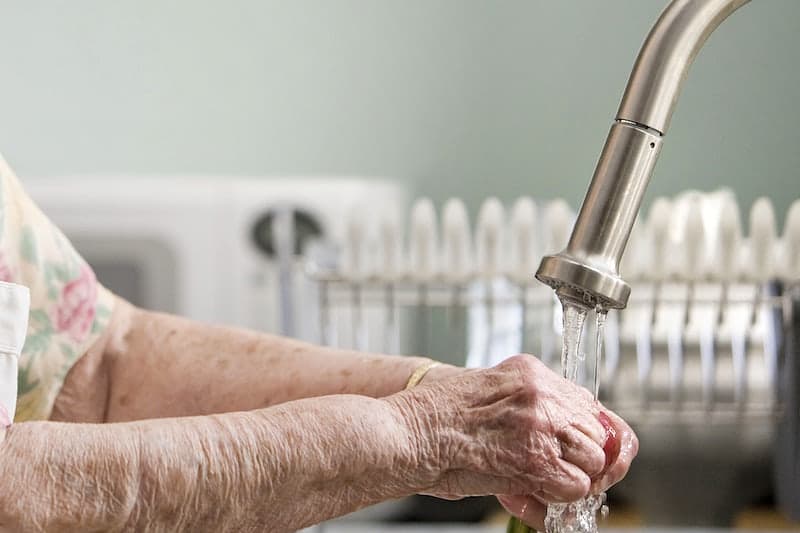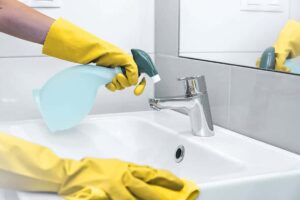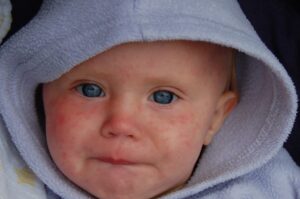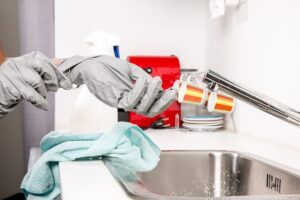We have all heard the food recalls because a product is or may be contaminated with one of the various bacteria that can lead to what’s referred to as food poisoning. This term is a broad, generic one and includes things like salmonella and e.coli. These are the most common ones, but there are others.
Improper Food Handling Can Lead to Food-Borne Illnesses
Would you be surprised to know that a significant percentage of food poisoning results not from commercially prepared food but from home cooking? Random testing of home kitchens that appeared extremely clean showed high concentrations of bacteria and viruses, the most common places being the kitchen and the bathroom. (Believe it or not, the kitchen is worse.)
The National Sanitation Foundation (NSF) found that areas where food is stored or prepared had more bacteria and fecal contamination than other places in the home.
Source: Healthline.com
As you probably realize, people often look to social media as the source of information. The problem is, it’s usually just opinion and not necessarily accurate or reliable unless it’s from a reputable source. We caution people about relying on what they see on Facebook or elsewhere when it comes to safe food handling.

We recently saw a post from a food blogger that alarmed us. She posed the question, “Do you wash your raw chicken before cooking it?”
First of all, we’d comment that was probably a very irresponsible question. Just because lots of people do it doesn’t make it right. And as you might imagine, there were two sides in the answers, both very vocal. And those who were diehard poultry washers refused to believe information posted from the CDC, the USDA, the FDA and other official sources. One vehement individual commented that “if you want to make your family sick because you don’t wash your chicken, go ahead.”
You may have learned from mom or grandma or whoever taught you to cook that you should always wash that slimy meat before you prepare it. But doing so is highly advised against. Much like flushing a toilet without the lid closed sends hundreds of droplets of bacteria-contaminated water airborne, washing a chicken in your sink can spread that invisible bacteria all over your kitchen, including up your nose.
The basic issue here is clean vs. disinfected. That washed chicken may look clean and no longer feel slimy, but appearance can be deceiving. Microorganisms are generally too small to see (except for mold), and they usually don’t smell.
That’s why our biohazard cleanup and remediation technicians don’t rely on just cleaning products, and neither should you. Know the basic safe food handling rules and use disinfectants to regularly treat your kitchen, both before and after food preparation. And don’t forget your hands!


 With the empty shelves at stores everywhere – a shortage of toilet paper, hand sanitizers, hand soap, and disinfectant cleaners, people are understandably concerned about protecting themselves from the spread of COVID-19. We’ve seen lots of reports and social media posts showing people using disinfectant cleaning wipes (most of them improperly). Here is some basic information on cleaning and disinfecting that is generally applicable to any infectious agent.
With the empty shelves at stores everywhere – a shortage of toilet paper, hand sanitizers, hand soap, and disinfectant cleaners, people are understandably concerned about protecting themselves from the spread of COVID-19. We’ve seen lots of reports and social media posts showing people using disinfectant cleaning wipes (most of them improperly). Here is some basic information on cleaning and disinfecting that is generally applicable to any infectious agent. Thought to have been all but eradicated in 2000, measles has reared its head again, in some places in almost epidemic proportions. Active outbreaks have been reported in the past year in at least 23 states, one of them being Washington. (The first confirmed case was in 2018 Clark County in the southwest part of the state, including Vancouver. Since then it has spread.) Measles is highly contagious; in fact, the CDC states that approximately 90% of unvaccinated individuals who are near to a person with the disease will contract it themselves. (However, if you contracted measles as a child, you have developed a natural immunity.)
Thought to have been all but eradicated in 2000, measles has reared its head again, in some places in almost epidemic proportions. Active outbreaks have been reported in the past year in at least 23 states, one of them being Washington. (The first confirmed case was in 2018 Clark County in the southwest part of the state, including Vancouver. Since then it has spread.) Measles is highly contagious; in fact, the CDC states that approximately 90% of unvaccinated individuals who are near to a person with the disease will contract it themselves. (However, if you contracted measles as a child, you have developed a natural immunity.) As
As 
